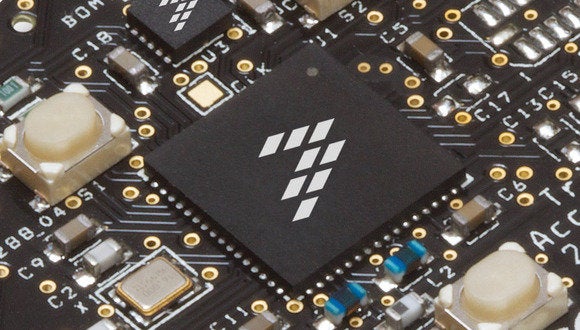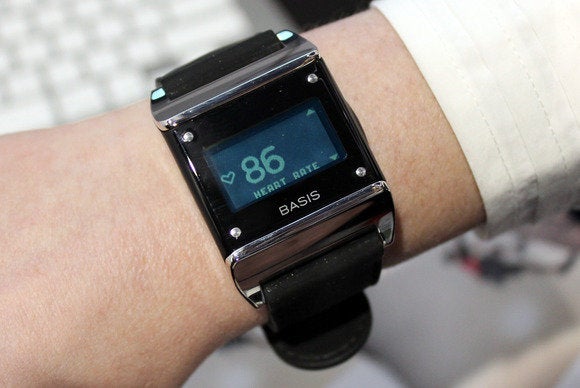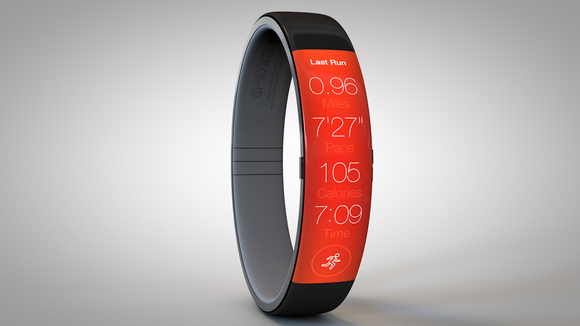
Ten sensors sure sounds like a lot of hardware to stuff into a smartwatch. Yet this is just the baseline sensor count that’s purported for Apple’s yet-to-be-announced iWatch. The Wall Street Journal says Apple’s mythical smartwatch will actually have more than 10 sensors, leading me and other tech pundits to ask, How is Apple going to get past that magic number 10?
What are 10 possible sensors in the watch? Accelerometer, heart rate, temp, what else?
Once we begin looking at the current wearable hardware landscape, we see that 10 or more sensors might sound like an indulgence, but none of the sensors Apple might include is particularly esoteric. An expert tells me that a blood-glucose monitor is off the table (more about that below), but a suite of much more pedestrian sensors are available today, and could appear in an Apple smartwatch—should Apple deign to release one.
The 5 most likely sensor suspects
To get a better read on Apple’s alleged plans, I turned to Hamid Farzaneh. He’s the CEO of Sensoplex, a Silicon Valley company that designs and supplies sensor modules for the emerging wearables industry. I asked Farzaneh to speculate on the most likely sensor candidates for Apple’s iWatch based on what we learned in the Wall Street Journal report. What Farzaneh shared with me didn’t include any bombshells.
Farzaneh rates five familiar sensors as “highly probable,” if we’re to take the Journal report at face value. (The following picks are Farzaneh’s, while the explanations are mine.)
Image: Todd Hamilton
1. Accelerometer: Accelerometers are table stakes in the wearables game. They measure body movement to track your steps and sleep patterns.
2. Gyroscope: Another no-brainer. Gyroscopes measure rotation for a variety of purposes. They feed data into exercise-tracking algorithms, and can sense when you turn your wrist to look at your watchface, thus waking up your display.
3. Magnetometer: This is a compass by any other name. It can be used for improved accuracy in motion tracking.
4. Barometric pressure sensor. This isn’t necessarily about supplying the user with weather data. No, the barometer can measure changes in altitude, which is relevant to any runner or cyclist who climbs hills.
5. Ambient temperature sensor. Another relatively simple sensor that could be used in algorithms that report bio-data. For example, ambient temperature could be compared to skin temperature in the service of determining exertion levels.
Sensor suspects 6 through 10
So those are the obvious sensors. Farzaneh rates the following sensors as simply “probable,” and again, the explanations are mine:
6. Heart rate monitor. It does what it says it does. Basis integrated a heart rate monitor into its B1 Band in late 2012, and Samsung’s latest Gear wearables, released this April, also include heart rate monitors. Farzaneh didn’t specify, but I’ll assume he’s referring to an optical blood flow sensor, from which heart rate can be divined.
 image: Jon Phillips
image: Jon Phillips7. Oxymetry sensor. This one measures blood oxygen, a key data point for reporting accurate pulse rates (and thus heart rates).
8. Skin conductance sensor. This measures galvanic skin response—or, to put it in gross layman’s terms, how much you sweat. The Basis B1 band already has this sensor, which helps calculate exertion levels, and thus calorie-burn numbers.
9. Skin temperature sensor. Here’s another sensor that’s already employed in the Basis band. When you compare skin temperature to ambient temperature, you can get a better idea of how hard you’re exercising.
10. GPS. Don’t you want to know where you’re going, and where you’ve been?
Blood glucose? Forget about it
So there you have it: Ten possible iWatch sensors, and not a single one is particularly unusual. In fact, it may take as many as 10 sensors for Apple to release a feature-for-feature competitor to the Basis B1 band.
And let’s not forget that Samsung has already announced the 2014 arrival of its Simband, which includes sensors to measure blood oxygen and CO2 levels, heart rate, hydration levels, skin temperature, and galvanic skin response—among a greater bag of tricks. Granted, the Simband is intended to be a development platform and not a retail product for consumers, but with sensors that effectively put a miniature electrocardiogram on your wrist, it may represent the pinnacle of what can be packed into a health-focused wearable this year.

The Wall Street Journal report that started all this sensor speculation notes that Apple’s smartwatch will include more than 10 sensors. So how might we expand on Farzaneh’s list? Well, whatever you do, don’t expect a blood-glucose sensor just because rumors have been moving in that direction, or because Apple employs a former executive of C8 MediSensors, a defunct company once dedicated to making a non-invasive blood-glucose monitor.
“I know a lot of the guys who are working at Apple now, and they would all agree that [a smartwatch capable of measuring blood glucose] is a little nutty,” Ries Robinson told me in March, after iWatch rumors first started bubbling up. Robinson is CEO of InLight Solutions, a company that develops sensor-based measurement systems for life-science applications. He also has more than 20 years experience in developing systems for the measurement of body tissue.
“We’ve had some success—not to the accuracy needed for a medical device—but we’ve had some success in making optical measurements of glucose in the human body,” Robinson says. “The instrumentation we’ve historically used to make those measurements is approximately $10,000, and requires that you use wavelengths of light that are in the near infrared. But all of the wearable devices I’m aware of today use a silicon detector, and there isn’t any optical information in the silicon region for glucose. If there were, it would be terrific. You’d have non-invasive glucose meters for people with diabetes. But there’s no information.”
And here’s another thing with no information—or at least no substantiated information: the mythical Apple iWatch. Sure, it’s fun to speculate on reports from unnamed sources. And while I do personally believe Apple is preparing a smartwatch for a 2014 release, I think every right-minded person can agree we won’t really know what sensors it includes until specs and features are shared by Apple.
The image of a Freescale accelerometer at the top of this article appears for illustration purposes only.
This story, “The 10 most likely sensors in a 10-sensor Apple smartwatch” was originally published by TechHive




0 Comments